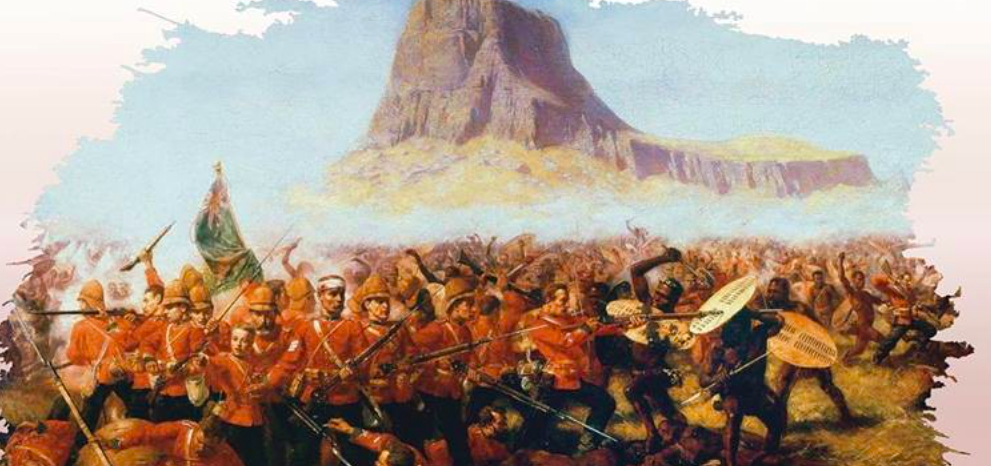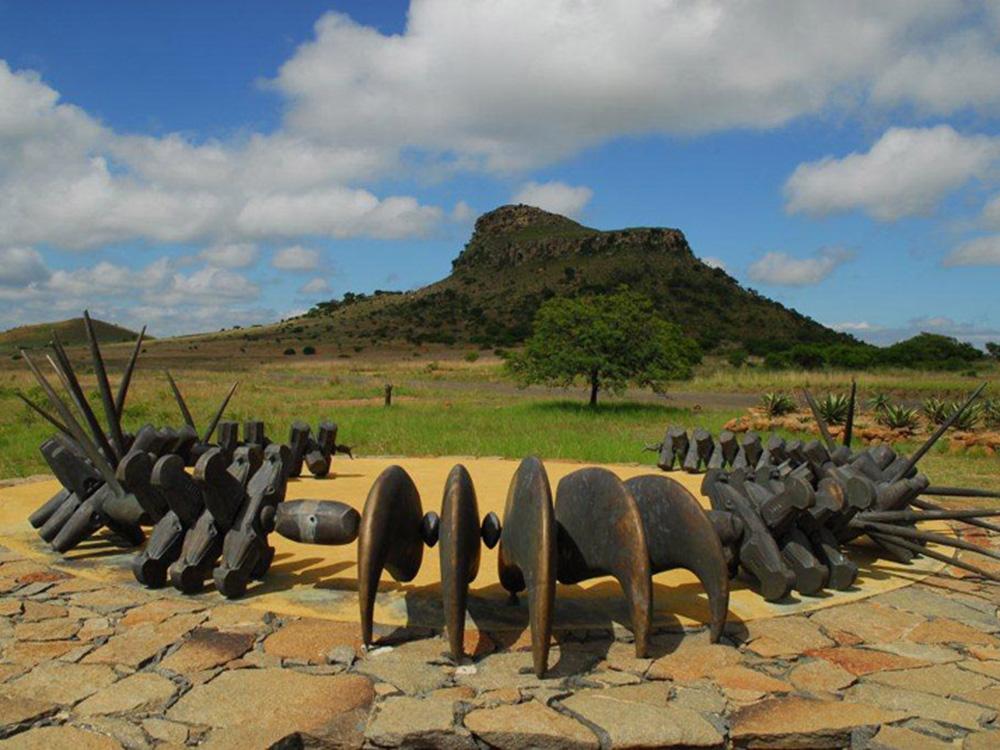
Disclaimer: Any views expressed by individuals and organisations are their own and do not in any way represent the views of The Heritage Portal. If you find any mistakes or historical inaccuracies, please contact the editor.
Physical combat has to be the most exhilarating experience that any man can have. Obviously, all-out effort, commitment and ferocity are required to win the day. None have displayed this more effectively than the Zulus, and their reputation is legendary. However, over some time various authors have postulated that, apart from an adrenaline-induced state of hyper-aggressiveness, the Zulus were “doctored” with hallucinogenic material to enhance these effects prior to engaging in battle.
See Ian Knight’s “The Anatomy of the Zulu Army” page 221 –
It is possible, incidentally, that this state (blood lust) was further exaggerated by the use of narcotics. Tobacco was popular amongst the Zulus, who did not smoke it, but ground the dried leaves and took it as snuff … it was sometimes mixed with powdered aloe, to make it more pungent, and there are suggestions that men embarking on campaign would further mix it with ground cannabis. If so, this would have dulled the physical effect of exhaustion and pain, and further stimulated the excitement of battle. There are frequent contemporary versions of Zulus taking snuff during lulls in battle.
To deal firstly with the effects likely to be caused by cannabis, I would agree that its use would have been likely to dull pain and exhaustion, but other evidence I’ve come across tends to suggest that cannabis (known locally as either dagga or insangu) induces a state of mellow good will, not aggression, so one can debate this at length with seasoned practitioners. Never having used the drug, I cannot speak from experience.
I must confess my ignorance here, but apparently THC (the main ingredient of cannabis) is not soluble in water, so cannot be absorbed through the mucous membranes of the nose. There is therefore no point in snorting dagga – it has to be smoked or eaten. That being the case, Ian’s conclusions in this regard are debateable.
Ian Knight also subscribes to the theory that the use of so-called “magic mushrooms”, together with cannabis, added to a heightened state of crazed ferocity.
There appear to be three theories on this question.
Firstly, the Zulu War 1879 Discussion and Reference Forum suggests that this was indeed the case. According to the Forum, the Zulus apparently used a combination of cannabis and Amanita Muscaria (a typical toadstool – large white gilled, white spotted and usually red mushroom), also known as Fly Agaric. The mushroom contains MUSCIMOL.
According to Wikipedia, 'Muscimol (also known as agarin or pantherine) is the principle psychoactive constituent of Amarita Muscaria and related species of mushroom. Muscimol displays sedative-hypnotic and disassociate psycho activity'.
Although the mushroom can apparently be eaten if sliced thinly and thoroughly boiled in water, its effects include a feeling of intoxication, depression, sedation, delirium, nausea, vomiting, headache and hypnotic disassociation. The ‘Field Guide to the Mushrooms of South Africa” confirms that the use of so-called “magic mushrooms” to induce deliberate intoxication has been known for centuries BUT, according to modern experimenters, the effects of Fly Agaric in particular seem to be mainly soporific and nausea inducing.
Such symptoms are hardly likely to have enhanced the Zulu’s capabilities in physical combat.
The second issue here is that Amarita is endemic to the Northern Hemisphere, although it has been introduced to many countries in the Southern Hemisphere. But it cannot be cultivated on its own – it is dependent on a symbiotic relationship with deciduous forests. According to the “Field Guide to the Mushrooms of South Africa”, Amarita is common in the south-western Cape, Free State and Transvaal, particularly under oak and pine trees.
So unless the Zulus planted large tracts of pine forests way back in the 1800s, then, it is unlikely that this is the magic mushroom concerned.
Secondly, www.shroomery.org postulates that the so-called magic mushroom could be the bulb of a flower of the Amaryllis family, known as BOOPHANE DISTICHA or Bushman Poison bulb. This bulb contains BUPHANIDRINE, an alkaloid with hallucinogenic and pain killing properties.
According to Botanist Ben-Erik Van Wyk from the Rand Afrikaans University, the dosage of buphanidrine necessary to reduce pain is very close to the toxic dose “but in very experienced traditional healer’s hands it should be safe. They usually test it on themselves first”.
Thirdly, the “Field Guide to the Mushrooms of South Africa” states that active levels of muscarine are found in certain species of Inocybe and Clitocybe, for example the red-staining Inocybe patouillardi. Somewhat disgustingly, the main symptoms are the increased stimulation of all the secretory glands resulting in profuse salivation, sweating and weeping, together with nausea, vomiting and diarrhoea, disturbed vision and even respiratory difficulty.
Again, symptoms hardly likely to have driven the Zulus into a murderous frenzy – a box of Kleenex would have come in more handy.
Of course, there are then the additional almost insurmountable logistical problems of finding and transporting enough “magic mushrooms” to “doctor” an army of 20 000 + men at Isandlwana and a smaller number at Nyezane, both of which took place on the same day. Plus the time it would have taken to have done so, considering that unless carefully administered by trained inyangas, the results could have been fatal.
Memorial at Isandlwana (Talana Museum)
So … did the Zulus use magic mushrooms? I’ve observed a multitude of strikes and riots over the last few decades, and although participants have almost invariably been cleansed and “doctored” beforehand by a sangoma, I have to say that never once have I seen anyone eat anything resembling a mushroom before embarking on a stone-throwing frenzy.
It’s possible, but...
About the author: Pat Rundgren was born in Kenya and grew up in what was then Bechuanaland and Rhodesia. He has nearly 10 years infantry experience as a former member of the Rhodesian Security Services. He is passionate about and has a deep knowledge of the battles, the bush and Zulu culture. He has written numerous articles on military subjects and militaria collecting for overseas publications, has contributed to several books and is currently busy with his eighth book. His wide ranging knowledge and over 20 years guiding experience and unique story telling will bring events alive to his listeners. His books “What REALLY happened at Rorke’s Drift?” and on Isandlwana and Talana have gone into a number of reprints. He is a collector of militaria with special focus on medals. He also organises and conducts tours around the battlefields of KwaZulu-Natal and tours into Zululand to experience traditional and authentic Zulu culture and life style. Pat is currently the Chairperson of the Talana Museum Board of Trustees and one of the volunteer researchers.
References:
- Knight, Ian. “The Anatomy of the Zulu Army”. Greenhill Books, London. 1995.
- “The Field Guide to the Mushrooms of South Africa”.
- Wikipedia
- www.shroomery.org
- Zulu War 1879 Discussion and Reference Forum at www.1879zuluwar.com
Comments will load below. If for any reason none appear click here for some troubleshooting tips. If you would like to post a comment and need instructions click here.

